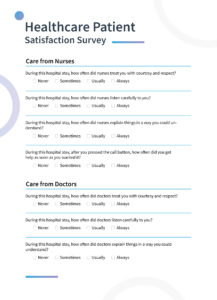In the healthcare industry, safeguarding patient privacy and upholding ethical data handling practices are of utmost importance. Creating and implementing a comprehensive medical office privacy policy template is crucial to achieving this goal. This document outlines the specific measures your medical office takes to protect patient information and ensure compliance with relevant regulations. It serves to inform patients about their rights and choices regarding their personal data.
By establishing a clear and detailed privacy policy template, you can effectively address patient concerns, foster trust, and demonstrate your commitment to data security. Patients should be provided with a copy of the privacy policy upon their first visit or upon request, ensuring transparency and facilitating informed consent.
1. Patient Privacy Rights and Protections
Introduction: Your medical office privacy policy template should begin by emphasizing the patient’s right to privacy and your commitment to protecting their personal information.
Main Paragraphs:
- Notice of Privacy Practices: Outline the purpose of the privacy policy, the types of information collected, and the reasons for such collection.
- Patient Consent: Explain the concept of informed consent and obtain patient authorization before using or disclosing their protected health information (PHI).
- Limitations on Use and Disclosure: Specify the circumstances under which PHI can be used or disclosed without patient consent, such as for treatment, payment, or healthcare operations.
- Individual Rights: Detail patients’ rights to access, amend, or request restrictions on the use or disclosure of their PHI.
2. Safeguarding Patient Information
Introduction: In this section, discuss the security measures your medical office has in place to protect patient information from unauthorized access, use, or disclosure.
Main Paragraphs:
- Physical Security: Describe the physical safeguards implemented to protect PHI, such as restricted access to medical records, secure storage facilities, and controlled access to office premises.
- Electronic Security: Explain the electronic security measures employed, including encryption of PHI, secure transmission of data, and regular system updates to prevent unauthorized access.
- Personnel Training: Emphasize the importance of employee training in maintaining patient privacy and adhering to data security protocols.
- Breach Notification: Outline the procedures for promptly notifying patients in the event of a breach of PHI.
3. Conclusion
To conclude, implementing a robust medical office privacy policy template is essential for protecting patient privacy, demonstrating compliance with regulations, and building trust with patients. This document should clearly communicate your commitment to safeguarding PHI, outlining the rights of patients and the measures taken to secure their information. Regularly reviewing and updating the privacy policy is crucial to ensure it remains effective and aligned with evolving regulations and industry best practices.
By providing patients with a comprehensive privacy policy, you not only fulfill legal obligations but also demonstrate transparency and respect for their privacy rights. This leads to enhanced patient satisfaction, increased confidence in your practice, and a stronger foundation for long-term patient relationships.
4. FAQ
What is a medical office privacy policy template?
A medical office privacy policy template is a document that outlines the specific measures a medical office takes to protect patient information and ensure compliance with relevant regulations.
Why is a medical office privacy policy template important?
A medical office privacy policy template is important because it helps to protect patient privacy, demonstrate compliance with regulations, and build trust with patients.
What should be included in a medical office privacy policy template?
A medical office privacy policy template should include information about patient privacy rights and protections, safeguarding patient information, and breach notification procedures.

